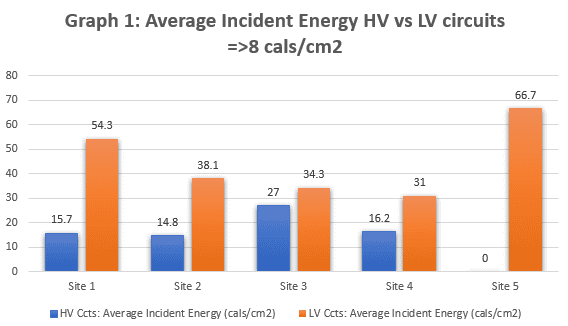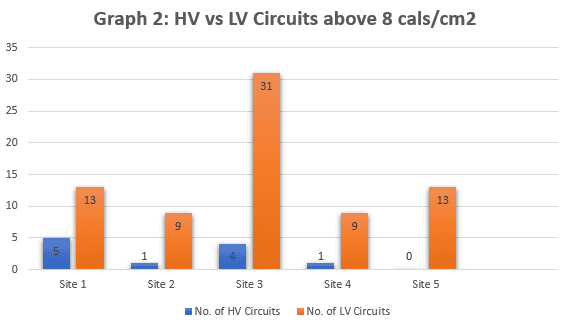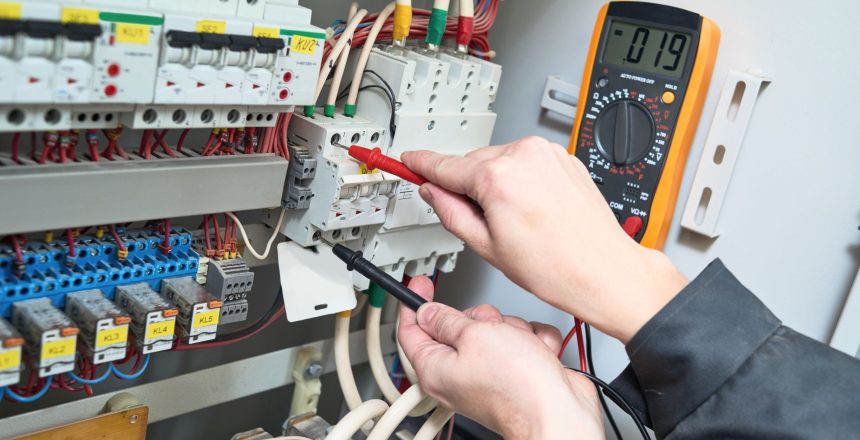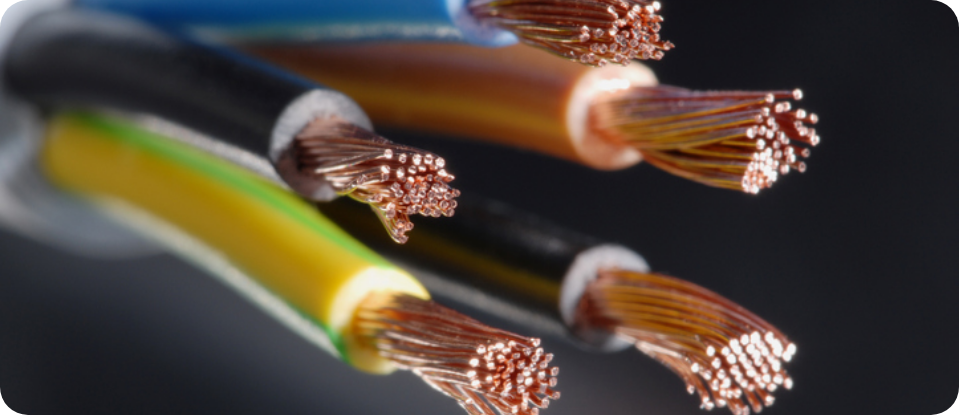Over the last few years Electrical Safety (UK) has carried out many arc flash studies for Industrial and Commercial clients. On initial contact with the client one of the common themes that emerge is that the client often perceives their arc flash risk at high voltage HV (above 1000Vac) to be bigger than the risk at low voltage LV (below 1000Vac). From my experience of carrying out arc flash studies I have always advised the client, that in my opinion, the arc flash risk is higher at low voltage.
This article looks at whether the data from a sample of some of our arc flash studies show this to be the case.
Read here to get a better understanding of arc flash, and how it’s caused and prevented.
Where did I draw the line?
I used a value of 8 cals/cm2 or greater as a boundary when categorising incident energy into a high or low hazard. It should be noted that any arc flash event can result in injury to personnel and theNorth American NFPA 70E Standard defines: “Boundary, Arc Flash. When an arc flash hazard exists, an approach limit from an arc source at which incident energy equals 1.2 cal/cm2 (5 J/cm2).Informational Note: According to the Stoll skin burn injury model, the onset of a second-degree burn on unprotected skin is likely to occur at an exposure of 1.2 cal/cm2 (5 J/cm2) for one second.” The reasons for choosing 8 cals/cm2 are as follows:

- A typical PPE system for the protection of personnel against a value of incident energy below 8cals/cm2 would include all of the following:
- Overalls or Shirt and Trousers (as shown below)
- Balaclava
- Helmet and face shield
- Safety glasses or goggles
- Hearing protection
- Gloves
- Footwear- Under layers to be made from non-melting natural fibres
Note: all the items above would need to be rated to at least 8 cals/cm2
The shirt, trousers and shoes are comfortable enough to be worn as normal workwear when not exposed to arc flash hazard. North American NFPA 70E Standard for Electrical Safety in the Workplace 2018 when explaining how best to protect personnel above 8 cals/cm2 states:
“M.1.2 The total system of protective clothing can be selected to take credit for the protection provided by all the layers of clothing that are worn. For example, to achieve an arc rating of 40 cal/cm2 (167.5 J/cm2), an arc flash suit with an arc rating of 40 cal/cm2 (167.5 J/cm2) could be worn over a cotton shirt and cotton pants. Alternatively, an arc flash suit with a 25 cal/cm2 (104.7 J/cm2) arc rating could be worn over an arc-rated shirt and arc-rated pants with an arc rating of 8 cal/cm2 (33.5 J/cm2) to achieve a total system arc rating of 40 cal/cm2 (167.5 J/cm2). This latter approach provides the required arc rating at a lower weight and with fewer total layers of fabric and, consequently, would provide the required protection with a higher level of worker comfort.”
- It is generally not reasonably practicable to implement engineering solutions to reduce the incident energy below 8 cals/cm2 We supply our clients with a tailored indication of what is reasonably practicable as part of our arc flash study reports. This indication is designed to help them to understand what is required of them under UK Legislation.
Sample size and Industry
I started by selecting 5 arc flash studies at random that we had completed recently. The vast majority of our arc flash studies are carried out on private networks owned by large companies. The sites were chosen from the following industries: Equipment Manufacturing; Mining and Quarrying; Pharmaceuticals; Aerospace; and Food. I tried to select a representative sample of the electrical networks that we see in the UK.
Analysis
The following graphs show the results of my analysis:

If we look at Graph 1 voltage chart, we can see that the average incident energy of the “high” incident energy LV circuits is higher than average “high” incident energy of the HV circuits, in all the cases studied. Bearing in mind that the incident energy level defines the severity of the arc flash hazard when using the IEEE 1584 standard.

In Graph 2 voltage chart we can see that, at every site we looked at, there were more LV circuits than HV circuits where the incident energy was above 8 cals/cm2. From an exposure point of view, there are more “high” incident energy circuits at LV than at HV at every site. Electrical personnel are also more likely to be carrying out activities on the LV equipment that could expose them to an arc flash event. Some generic examples of activities that could expose personnel to arc flash (dependent upon equipment condition and design) are:
- Circuit breaker or fused switch operation with enclosure doors closed
- Circuit breaker or fused switch operation with enclosure doors open
- Work on or near energised parts, including voltage testing
- Insertion or removal (racking) of circuit breakers to or from cubicles with doors open
- Insertion or removal of withdrawable compartments (e.g. switchboards and motor control centres) with doors open
- Removal of bolted covers (to expose bare, energised parts)
- Opening hinged covers (to expose bare, energised parts)
Another graph showed us the percentage of the LV circuits that have “high” incident energy. Across the 5 sites, an average of 20% of the LV circuits had “high” incident energy.
Conclusion
Looking at the data, we can see that the perception that HV poses a higher arc flash risk than LV is incorrect. The arc flash hazard severity is on average higher at LV than HV. Electrical personnel working in a typical industrial or commercial environment are coming into contact with potential arc flash hazard more often at LV than at HV.
We have conducted arc flash assessments for brands such as Honda Racing and Northern Powergrid as well as smaller local companies.
Would you like a free arc flash pre-assessment? Claim it here.
We also provide arc flash training to help workers understand and run risk assessments on-site.




